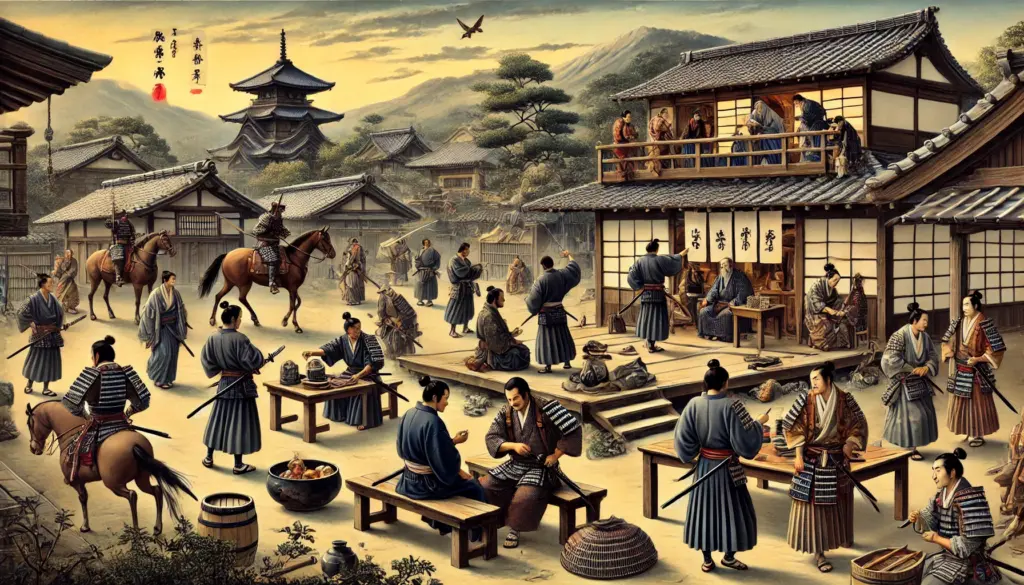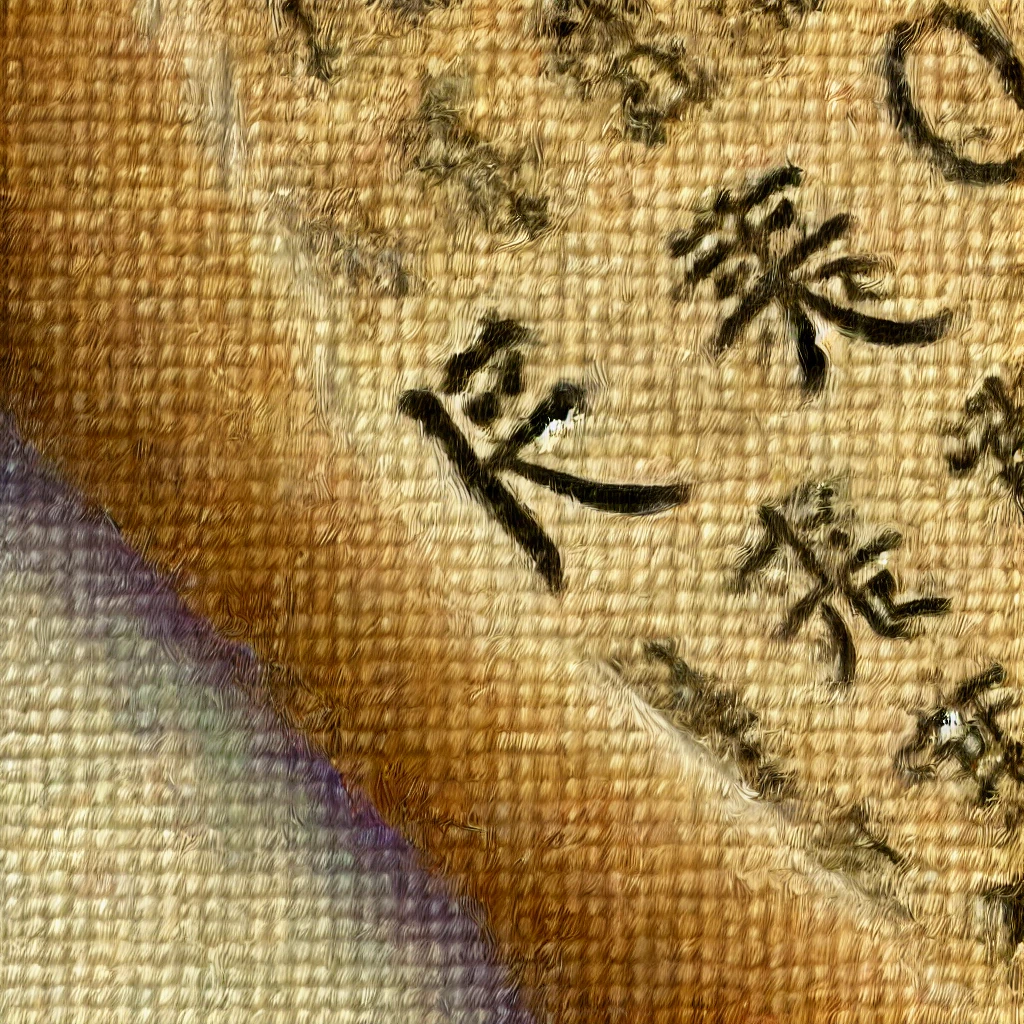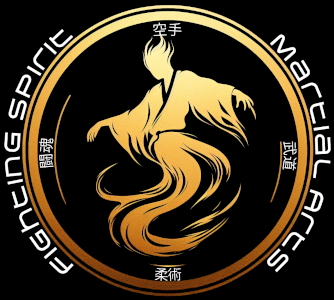Introduction to Part Two: The Virtue of Gi – Righteousness
In our initial exploration of Bushido, “Exploring Bushido: The Timeless Way of the Samurai and Its Modern Relevance,” we delved into this ancient code’s rich historical tapestry and profound cultural significance. We discussed how Bushido, translating literally to “the way of the warrior,” has shaped not only the lives of samurai through centuries but also continues to influence modern society in multifaceted ways. Our journey through the philosophical roots revealed how Confucianism, Buddhism, and Shintoism intricately wove into the fabric of Bushido, creating a robust moral code that guided samurai in life and battle. If you missed it, you can revisit our discussion here.
Today, we embark on the second part of our series to dissect one of the core virtues of Bushido: Gi, or righteousness. This virtue is central in defining the samurai’s moral compass and understanding how these principles can be applied to our daily lives to foster integrity, justice, and ethical decision-making. In this post, we will trace the historical lineage of Gi, explore its moral dimensions, and discuss its relevance in contemporary settings, from corporate boardrooms to personal challenges.
Join us as we explore how the virtue of righteousness continues to offer timeless lessons that transcend cultural and historical boundaries, inspiring us to live lives of purpose and integrity.
Historical Context of Gi in Bushido
The virtue of Gi, often translated as “righteousness” or “justice,” is a cornerstone of the Bushido code, embodying the ethical framework within which the samurai operated. Its origins are deeply entwined with the moral and philosophical teachings that influenced Japan during the formative years of Bushido’s development.
Gi originates from the broader context of Confucian ethics, where it represents a moral righteousness derived not from legalistic or authoritarian mandates, but from an individual’s own heart. In the Japanese samurai context, Gi was more than mere adherence to ethical norms; it was a way of being that demanded a deep, personal commitment to do what is right, irrespective of the risks involved. This commitment was seen as fundamental to a samurai’s honour and his practical role as a protector and leader within feudal Japan.

For the samurai, Gi was a guiding principle in both combat and civil life. It dictated their interactions with lords, fellow samurai, and the common people, emphasizing a life led by fairness and moral rectitude. The practice of Gi was expected to transcend the battlefield and permeate all aspects of a samurai’s existence. It was this commitment to righteousness that often defined a samurai’s legacy, as their actions in accordance with Gi were a testament to their courage and integrity.
In battles and duels, a samurai’s decision to spare an opponent, or to fight to the death, was often underpinned by Gi. These were not decisions of mere strategy or survival but were influenced by a deep-seated belief in doing what was morally correct, even at the cost of one’s own life. The ethical dilemma of taking a life, therefore, was mitigated by the adherence to righteous action as dictated by Gi, ensuring that each decision aligned with the deeper values of Bushido.
In peacetime or their role as bureaucratic or feudal managers, samurai used Gi as a principle for governance and leadership. It demanded that they be fair and just in their rulings, and that their leadership foster righteousness not through fear, but through a shared sense of moral duty. This aspect of Gi influenced many samurai to engage in educational pursuits, arts, and other civil activities that promoted a balanced and morally upright society.
The essence of Gi, while practically demonstrated in the lives of samurai, was also extensively discussed and elaborated in several key historical texts. Works such as “Hagakure” and “Bushido Shoshinshu” not only capture the spirit and practical applications of Gi but also provide a philosophical underpinning that has preserved this virtue through the centuries. These texts serve as a bridge between the ancient practices of the samurai and the philosophical inquiries into what it means to live a righteous life, an exploration that we will delve into in the following section.
Key Historical Texts Highlighting Gi

As we delve deeper into the virtue of Gi, it becomes imperative to explore how this concept was articulated and preserved in some of the seminal texts of samurai philosophy. Two such texts, “Hagakure” and “Bushido Shoshinshu,” offer profound insights into the ethical underpinnings of Gi and its practical application within the life of a samurai.
“Hagakure”: The Hidden Leaves
Written in the early 18th century by Yamamoto Tsunetomo, “Hagakure” is often considered one of the most influential texts on Bushido. It was composed as a guide for samurai and delves into the aspects of a warrior’s life, emphasizing the importance of living and dying for one’s lord as the ultimate expression of loyalty and righteousness. Tsunetomo extols the virtue of Gi by advocating for actions driven by moral correctness, rather than by personal benefit or calculated outcomes. His interpretations provide a window into the samurai’s mindset, where Gi is seen not merely as a social obligation but as a personal creed to elevate one’s life to higher standards of moral integrity.
“Bushido Shoshinshu”: The Code of the Samurai
Daidoji Yuzan’s “Bushido Shoshinshu,” written during the Tokugawa period, is another critical work that systematizes the samurai code, including the aspect of Gi. This text is more instructional compared to the introspective style of “Hagakure” and outlines how a samurai should cultivate virtues, including righteousness. Yuzan emphasizes Gi as a way of achieving moral clarity and justice, essential for the governance and leadership roles that samurai often held. His treatise helps define the contours of Gi, offering practical advice on how to integrate this virtue into daily samurai life.
The abstract teachings of Gi found concrete expression in the lives of several historical samurai figures known for their unwavering commitment to righteousness. For instance:
- Tokugawa Ieyasu, the founder of the Tokugawa shogunate, is celebrated not only for his military exploits but also for his administrative reforms and fair governance, reflecting his dedication to Gi.
- Oishi Yoshio, the leader of the legendary 47 Ronin, epitomized Gi through his loyal and righteous conduct following the forced suicide of his lord. His actions underscored a profound commitment to duty and justice, hallmark traits of Gi.
- Saigo Takamori, often referred to as the “last true samurai,” is revered for his role during the Meiji Restoration and his principled stand during the Satsuma Rebellion, where his adherence to Gi and honour led to his eventual martyrdom.
The historical context and texts like “Hagakure” and “Bushido Shoshinshu” provide foundational knowledge of Gi, but its ethical dimensions stretch far beyond the battlefield and governance. In the next section, we will explore how Gi influences modern ethical considerations, its implications for contemporary moral dilemmas, and its enduring relevance in fostering a just society. This examination will not only deepen our understanding of Gi but also illustrate its applicability in resolving the complex ethical challenges we face today.
Ethical Dimensions of Gi
Gi, as an ethical dimension within Bushido, profoundly influences both decision-making and moral integrity, compelling adherence to an internal moral compass over external laws or societal expectations. In the life of a samurai, every decision needed to resonate with a deep-seated sense of what is just and honorable, emphasizing the righteousness of the process rather than the end results. This approach fosters a culture where integrity and accountability are paramount, encouraging individuals to be self-regulating and responsible for their actions and their consequences.
When compared to Western concepts of justice and righteousness, Gi presents a nuanced perspective. Like Western justice, which emphasizes fairness and ethical treatment, Gi advocates for moral rectitude. However, Gi’s framework is more introspective and personal, rooted deeply in the individual’s moral beliefs and the expectations of their societal roles, contrasting with the often systemic and universal application of laws seen in Western traditions. This personal aspect of Gi aligns more closely with virtue ethics in Western philosophy, which focuses on the character of the moral agent rather than the morality of specific actions.
Gi, the cornerstone of righteousness within the Bushido code, intricately weaves with other core virtues such as Yu (courage) and Jin (benevolence), illustrating a rich tapestry of moral interplay that deeply influences samurai conduct. This dynamic interaction not only enriches each virtue’s application but also highlights the holistic nature of Bushido as a comprehensive ethical system.
The interplay between Gi and Yu (courage) is particularly compelling. Yu does not merely advocate for physical bravery but also emboldens a samurai to remain steadfast to ethical convictions, especially in the face of adversity or moral dilemmas. This integration ensures that actions taken are not just bold but are also underpinned by a strong moral foundation, aligning with the deeper values of justice and righteousness. For example, a samurai faced with a decision that could lead to personal gain but at the expense of others’ welfare would rely on Yu to draw courage but look to Gi to guide the decision towards the greater good, thus ensuring that courage does not stray into recklessness but remains anchored in ethical reasoning.
Similarly, the synthesis of Gi with Jin (benevolence) adds a layer of compassion to the sometimes rigid interpretations of righteousness. Jin challenges the practitioner of Bushido to consider not only what is just but also what is kind and empathetic, thereby softening the sometimes harsh edges of justice with mercy and understanding. This combination prompts a samurai to weigh decisions not only through the lens of what is legally right or wrong but also through the impact on human well-being, fostering decisions that support community harmony and individual dignity.
Moreover, Gi also relates closely with Makoto (sincerity), another Bushido virtue that calls for one to be genuinely truthful and forthright in actions and intentions. The bond between Gi and Makoto reinforces the integrity of a samurai’s actions, ensuring that decisions are made with a transparency that reflects both internal and external honesty. It is this commitment to sincerity that allows righteousness to be pursued without deception, enhancing trust and respect within the samurai community and the society at large.
These interactions underline how Gi is not isolated but is a part of a broader, interconnected set of values that guide the samurai’s life. Each virtue informs and enhances the others, creating a balanced and comprehensive ethical framework that is capable of guiding complex human behaviors and societal governance.
As we further explore how these timeless principles of Gi manifest in modern contexts, it becomes apparent that the applications of these ancient virtues extend beyond historical samurai philosophies to practical modern-day ethical challenges, providing insightful guidance for integrity and righteousness in our personal and professional lives. This exploration not only highlights the adaptability and relevance of Bushido virtues but also their potential to inform contemporary ethical practices, illustrating how ancient principles can be integral in addressing the nuanced moral landscapes of today’s world.

As we explore Gi’s manifestations in modern contexts, its relevance extends beyond the historical and philosophical to practical applications in contemporary settings. From leadership in corporate boards to everyday personal dilemmas, the principles of Gi offer insightful perspectives on integrity and ethical conduct. This exploration reveals the timeless nature of Bushido virtues and their practical utility in navigating the complex moral landscapes of today’s world, illustrating how ancient principles can address contemporary ethical challenges.
Gi in Modern Contexts
In today’s complex and interconnected world, the ancient Bushido virtue of Gi, which emphasizes righteousness and justice, continues to influence contemporary practices across various fields such as business, law, and everyday ethical dilemmas. The enduring relevance of Gi in these areas reflects the fundamental need for integrity and moral guidance, which are as crucial today as they were in the times of the samurai.
In the corporate world, the application of Gi translates into ethical leadership and responsible corporate governance. Business leaders who embody Gi prioritize long-term value and ethical considerations over short-term gains, leading to practices such as fair trade, sustainable production methods, and the development of transparent corporate policies. These actions ensure that the business not only complies with legal standards but also actively contributes positively to societal welfare, fostering trust and respect within the community.
The field of law also sees the significant influence of Gi, which underscores the importance of administering justice with impartiality and integrity. For legal professionals, embracing Gi means adhering to the spirit of the law, not just its letter, aiming to achieve true justice rather than merely following procedural correctness. This could manifest in efforts to provide equal representation, advocate for underprivileged groups, or push for reforms to outdated or unjust laws, ensuring that the legal system remains a true instrument of justice.
In everyday life, Gi serves as a moral compass for individuals, guiding them through various ethical dilemmas encountered in personal and professional settings. It encourages people to reflect on their actions and decisions critically, pushing them to choose paths that reflect their integrity and commitment to doing what is right, even when faced with easier, less ethical alternatives.
As we delve deeper into the practical applications of Gi, it becomes apparent how this virtue not only shapes individual choices but also influences broader organizational practices. The next section of our exploration will focus on real-world examples that highlight the implementation of Gi. We will look at organizations that have integrated these principles into their core operations and individuals whose actions demonstrate a profound commitment to justice and ethical behaviour. These examples will illustrate how the ancient principles of Bushido, and particularly Gi, continue to resonate and provide valuable lessons for navigating the ethical challenges of the modern world.
Living Gi: Examples of Righteousness in Action Today
As we explore the practical manifestations of Gi in contemporary settings, it becomes evident how this ancient Bushido virtue is not only relevant but actively embodied by certain individuals and organizations who uphold its principles in their daily operations and decisions. These real-world examples serve as modern-day reflections of the samurai’s commitment to justice, integrity, and moral rectitude.
One notable example is found within the realm of corporate social responsibility (CSR). Companies like Patagonia, known for its environmental and social ethics, exemplify Gi by integrating sustainability and fairness into their business models. Patagonia’s commitment to reducing environmental impact and improving worker conditions goes beyond compliance; it is a deliberate choice to do what is right, reflecting a deep-rooted sense of corporate righteousness. Their actions align with the principles of Gi by prioritizing ethical practices over profit maximization, ensuring that their business operations contribute positively to societal and environmental well-being.
In the legal field, figures such as Bryan Stevenson, a lawyer and social justice activist, demonstrate Gi through their relentless pursuit of justice and equality. Stevenson’s work, particularly with the Equal Justice Initiative, focuses on helping those wrongfully convicted on death row, a mission that speaks to the very heart of Gi—upholding justice and rectitude in a flawed system. His efforts to fight for those who are often forgotten or dismissed by society embody the samurai’s dedication to righteousness, even in the face of great personal and professional risk.
Furthermore, the world of whistleblowers provides compelling instances of individuals embodying Gi. People like Edward Snowden and Frances Haugen have made headlines for their decisions to expose unethical practices within their organizations or governments. These individuals chose to prioritize ethical transparency and the greater good over personal safety and career security, mirroring the samurai’s commitment to honour and justice, even at significant personal cost.
These examples not only illustrate how Gi is applied in modern contexts but also how it influences various sectors and societal roles, from corporate decision-makers and legal advocates to ordinary individuals standing up against injustice. As we continue to witness these principles in action, it becomes clear that the spirit of Bushido, particularly the virtue of Gi, still has a significant role to play in shaping a more just and ethical world. These stories inspire and challenge us to consider how we, too, can incorporate Gi into our own lives, striving for righteousness in all our actions.
Practicing Gi, the Bushido virtue of righteousness and justice, in modern society comes with its own set of challenges and rewards. This endeavour tests individuals and organizations alike, pushing them to prioritize ethical integrity over more immediate or material gains. Here’s a look at some of the complexities and benefits associated with living out this ancient principle today.
Challenges of Practicing Gi
- Economic Pressures: In a world where success is often measured by financial gain, adhering to Gi can sometimes mean forgoing short-term profits in favour of long-term ethical outcomes. Organizations may face dilemmas where ethical choices conflict with cheaper, more profitable options that could potentially harm the environment or exploit labour.
- Social and Cultural Conflicts: Globalization brings diverse cultural norms and practices, where what is considered ‘right’ in one cultural context may not align with another. Practicing Gi requires navigating these complex cultural landscapes, and making decisions that uphold justice and integrity while being sensitive to cultural differences.
- Risk of Retaliation or Unpopularity: Individuals who embody Gi, such as whistleblowers or those who challenge corrupt practices, often face significant personal and professional risks. They may encounter opposition, retaliation, or social ostracization for their stands against unethical behaviours within their organizations or communities.
- Ambiguity in Ethical Decisions: Not all decisions are clear-cut in terms of ethical rightness. Sometimes, the path that seems most just might also lead to unintended negative consequences. Determining the most righteous course of action can require complex ethical reasoning and personal judgment, which can be mentally and emotionally taxing.
Rewards of Practicing Gi
- Building Trust and Credibility: Individuals and organizations that consistently demonstrate Gi earn a reputation for reliability and integrity. This trust is invaluable and can lead to stronger, more loyal relationships with stakeholders, customers, and the community at large.
- Personal Fulfillment and Integrity: Practicing Gi aligns one’s actions with their values, leading to greater personal satisfaction and peace of mind. Knowing that one’s choices contribute positively to the welfare of others can provide a profound sense of purpose and fulfillment.
- Long-Term Success and Sustainability: While ethical practices might seem costly in the short term, they often lead to sustainable success. Businesses that operate ethically tend to outlast their less scrupulous competitors because they avoid legal issues, boycotts, and reputational damage. They also tend to attract and retain talent who value transparent and principled workplaces.
- Positive Societal Impact: Practicing Gi contributes to the greater good by promoting fairness, justice, and equality in society. Whether through advocating for fair labour practices, environmental conservation, or transparent governance, those who practice Gi help create a more equitable world.
- Leadership and Inspiration: By exemplifying Gi, individuals and organizations can lead by example, inspiring others to also prioritize ethics and justice in their decision-making. This can initiate waves of positive change across industries and communities, establishing new norms of conduct.
While practicing Gi in modern society poses certain challenges, the rewards undoubtedly contribute to a more just, sustainable, and fulfilling way of life for individuals and communities alike. As society continues to evolve, the principles embedded in Gi offer timeless guidance on navigating the ethical complexities of the modern world.
Personal Development and Gi
Embracing the virtue of Gi in personal development involves a conscientious effort to cultivate integrity and righteousness, not just in isolated incidents but as a consistent practice in daily life. This process enhances not only personal growth but also positively influences relationships and community interactions. Here are some ways to nurture Gi in personal life, and some insights into how it can reshape one’s approach to daily activities and decision-making.

Cultivating Gi Through Mindfulness and Self-Reflection: Mindfulness is a powerful tool for cultivating Gi as it encourages a state of awareness and presence that is crucial for ethical decision-making. By practicing mindfulness, individuals become more aware of their thoughts, emotions, and reactions, which can lead to more considered and ethical responses to daily challenges. Self-reflection complements mindfulness by providing the opportunity to assess one’s actions and intentions critically. Regular self-reflection helps in identifying personal biases and areas where ethical practices can be improved. This ongoing process ensures that one’s actions are consistently aligned with the principles of righteousness and justice.
Here are a few practices to foster mindfulness and self-reflection:
- Daily Meditation: Spend a few minutes each day in meditation, focusing on breathing and awareness to cultivate a mindful presence.
- Journaling: Keep a journal to reflect on daily decisions and their alignment with ethical values. This can highlight areas for improvement and celebrate ethical wins.
- Ethical Audits: Periodically review actions and decisions, perhaps weekly or monthly, to ensure they meet personal and societal standards of righteousness.
Impact of Righteousness on Relationships and Community Interactions
Practicing Gi significantly enhances personal relationships and community interactions. By embodying fairness and integrity, individuals inspire trust and respect from others. This trust forms a strong foundation for healthy, stable relationships, whether in personal circles, workplaces, or broader community settings. Moreover, righteous behaviour sets a positive example, encouraging others to also engage in ethical practices, which can uplift the entire community.
In personal development, righteousness influences how one handles conflicts and negotiations, ensuring that they are approached with fairness and a genuine desire for just outcomes. This approach not only resolves conflicts more amicably but also builds stronger, more resilient relationships.
Integrating Gi into Daily Routines and Decision-Making
Integrating Gi into daily life involves making a conscious effort to align everyday actions with the values of justice and integrity. Here are some practical tips for embedding Gi in daily routines and decision-making processes:
- Set Clear Ethical Goals: Define what righteousness means in your context and set specific, actionable goals to practice Gi in various aspects of your life.
- Ethical Decision-Making Framework: Develop a personal framework for ethical decision-making that can be applied to different situations. This might include steps like identifying ethical dilemmas, considering the impact of decisions on others, and seeking advice when needed.
- Role Models and Mentors: Identify role models who exemplify Gi and seek mentors who can provide guidance and feedback on your ethical practices.
- Community Service: Engage in community service or volunteer work, which not only benefits others but also reinforces your commitment to righteous living.
By actively seeking to incorporate Gi into their personal lives, individuals can foster a sense of purpose and contribute to a culture of integrity both at home and within their broader communities. This journey towards personal righteousness not only enhances one’s ethical standing but also enriches relationships and community bonds, creating a ripple effect of positive change.
As we begin to wind down our exploration of Gi, the Bushido virtue of righteousness, it’s essential to reflect on the transformative power this principle holds when consistently applied in daily life. The practice of Gi, deeply rooted in the ethos of the samurai, extends far beyond historical or cultural boundaries, offering profound lessons for personal growth and societal betterment today.
The Transformative Power of Righteousness
The consistent application of Gi influences not only the individual practitioner but also the wider community. By embodying righteousness, individuals become beacons of integrity and ethical leadership, inspiring those around them to also elevate their moral standards. This ripple effect can transform communities, creating environments where fairness, justice, and mutual respect are the norm rather than the exception.
On a personal level, the diligent practice of Gi cultivates a strong moral character. It encourages individuals to live authentically and act according to their deepest values of fairness and justice. This alignment between one’s actions and values fosters a profound sense of self-respect and inner peace. Over time, as individuals make decisions rooted in righteousness, they experience a strengthening of character that equips them to face life’s challenges with courage and grace. This personal evolution not only enhances one’s self-esteem but also deepens their relationships with others, as they are consistently seen as reliable and trustworthy.
Beyond personal growth, the widespread adoption of Gi principles can lead to significant societal transformations. When communities embrace righteousness, they lay the groundwork for more just and equitable social systems. From governance and law to business and education, every sector benefits from the infusion of ethical practices. Societies where Gi is a common practice experience higher levels of social trust and cooperation, which are critical for addressing complex global challenges such as inequality, corruption, and conflict.
The practice of Gi also fosters a culture of accountability and transparency in the public and private sectors. By prioritizing ethical behaviour and decision-making, organizations and institutions build their credibility and contribute positively to societal progress. This ethical stance encourages a shift away from short-term gains towards long-term sustainability and well-being for all.
As we continue to delve into the implications of living by Gi, it becomes clear that the journey of integrating righteousness into our lives is both challenging and rewarding. This virtue, while demanding, offers a pathway to a fulfilling life marked by deep ethical convictions and a strong sense of duty to oneself and others. The next steps in our exploration will further unpack how to live out Gi in various aspects of modern life, ensuring that this ancient virtue continues to resonate and bring about meaningful change in today’s world.
In reflecting on the transformative power of Gi, we see not just a historical or philosophical concept but a living practice that enhances personal lives and enriches communities. It is a testament to the enduring relevance of Bushido in helping us navigate the complexities of contemporary moral landscapes.
Throughout our exploration of Gi, the Bushido virtue of righteousness, we have traversed both historical landscapes and modern contexts to uncover the deep impact and ongoing relevance of this principle. From the disciplined lives of the samurai to the ethical challenges of contemporary society, Gi has demonstrated its profound importance in guiding moral behaviour and shaping character.
Historical examples of samurai who lived by the Bushido code teach us about the depth of commitment required to truly embody Gi. These warriors were not only skilled in combat but were also philosophers in their own right, deeply pondering on what it means to live rightly. The stories of figures like Miyamoto Musashi and Tokugawa Ieyasu show us that Gi was not merely about adhering to societal expectations but about an internal cultivation of virtue that guided all actions, both in battle and in governance.
Contemporary examples, such as ethical leaders in business or advocates in the legal system, show us that Gi remains highly relevant. These modern equivalents of the samurai use Gi to navigate complex ethical landscapes where decisions can have far-reaching consequences. They teach us that righteousness is not just about making the easy choices but about making the right choices, often in the face of significant personal or professional risk.
From these examples, we learn that practicing Gi leads to:
- A Strong Moral Foundation: Gi provides a robust framework for decision-making, rooted in integrity and justice.
- Respect and Trust: Individuals who consistently demonstrate righteousness earn the respect and trust of their peers, fostering stronger, more meaningful relationships.
- Resilience: Upholding Gi in challenging situations builds resilience and the courage to face adversity with moral clarity.
Encountering the concept of Gi and the examples of its practice prompts us to reflect on our own lives. How often do we make decisions based solely on personal gain rather than considering what is just and right? Do we stand up for righteousness in our daily interactions, or do we allow the pressures of societal norms and expectations to guide our actions?
To enhance the practice of Gi in our own lives, consider the following steps:
- Regular Self-Reflection: Take time to reflect on your daily decisions. Ask yourself whether these choices align with your core values of fairness and integrity.
- Seek Feedback: Engage with peers or mentors who can provide honest feedback on your actions and decisions. This can help identify areas where Gi can be better integrated into your behavior.
- Educate Yourself: Continue to learn about ethical theories and moral philosophies. Understanding different perspectives on what constitutes ‘righteousness’ can enrich your own practice of Gi.
Finally, encourage and challenge yourself to elevate your practice of Gi. Consider situations where you might have taken the easier path rather than the righteous one and think about how you might act differently in the future. By actively seeking to integrate Gi into every aspect of your life, you commit to a path of continual moral growth and personal development.
As we near the conclusion of our discussion, let us not view it as the end but as a checkpoint in our ongoing journey to live by the principles of Bushido. Let the lessons of the past and present invigorate our commitment to righteousness, inspiring us to make decisions that not only benefit ourselves but also contribute positively to the world around us.
Conclusion
As we conclude our exploration of Gi, the Bushido virtue of righteousness, let’s revisit the key points we’ve discussed and reflect on the profound impact this principle has on personal development and societal interaction.
Summary of Key Points on Gi
- Definition and Historical Context: Gi, translating to “righteousness” or “justice,” is a foundational element of the Bushido code, integral to the samurai’s moral and ethical conduct. Historically, it dictated not only their actions in battle but also their behaviour in civil life, emphasizing a deep commitment to ethical integrity.
- Gi’s Ethical Dimensions: Gi requires a personal commitment to doing what is morally right, even when faced with difficult choices. This involves a disciplined practice of mindfulness and self-reflection to ensure that one’s actions consistently align with their moral values.
- Contemporary Relevance: In modern settings, Gi continues to be relevant across various domains, including business, law, and everyday personal interactions. It serves as a guide for ethical leadership, fair governance, and integrity in personal conduct, encouraging a balanced approach to success that does not sacrifice ethical principles for material gain.
- Challenges and Rewards: Practicing Gi is not without its challenges, such as navigating economic pressures and cultural differences. However, the rewards are substantial, fostering trust, credibility, and personal fulfillment, and contributing to the creation of just and equitable communities.
- Real-World Applications: We have seen how Gi is embodied in contemporary figures and organizations that prioritize ethical behaviour and justice. These examples serve as modern-day manifestations of the samurai’s legacy, inspiring us to integrate these virtues into our own lives.
Encouraging Personal Reflection and Enhancement of Gi
This exploration of Gi invites each of us to introspect and consider how we can better integrate this virtue into our daily lives. The journey towards righteousness is ongoing and requires continuous effort and dedication. It challenges us to rise above our immediate circumstances and to act in ways that align with the highest standards of integrity and moral conduct.
As we move forward, let us take inspiration from both the historical samurai and contemporary examples to enhance our practice of Gi. Let us strive to make decisions that reflect our commitment to justice and righteousness, and let us influence our communities positively by being exemplars of ethical behaviour.
In embracing Gi, we commit to a path that not only leads to personal growth and development but also paves the way for a more just and ethical world. It is in our daily choices and actions that we can truly embody the spirit of Bushido and carry forward its timeless legacy into the future. Let this exploration of Gi be a starting point for a deeper commitment to living a life marked by righteousness and integrity.
As we conclude our discussion on Gi, we turn our attention to the next vital Bushido virtue: Yu, or courage. In our upcoming exploration, “Yu – The Courage to Confront Life’s Challenges,” we will delve into the dynamic nature of this virtue, examining how it not only pertains to physical bravery but also encompasses the moral courage to make difficult decisions and stand firm in the face of adversity.
Join us as we uncover how Yu intersects with Gi, enhancing our understanding of how courage is deeply interwoven with righteousness. We will explore historical examples of samurai who exhibited extraordinary courage, discuss contemporary figures who embody this virtue, and provide practical advice on how we can cultivate Yu in our own lives to confidently tackle both personal and professional challenges.
Prepare to be inspired by stories of bravery and resilience that demonstrate the power of courage in overcoming obstacles, driving change, and leading a life of purpose and integrity. Stay tuned for a deep dive into the heart of Bushido’s teachings on courage and its critical role in navigating the complexities of modern life.

